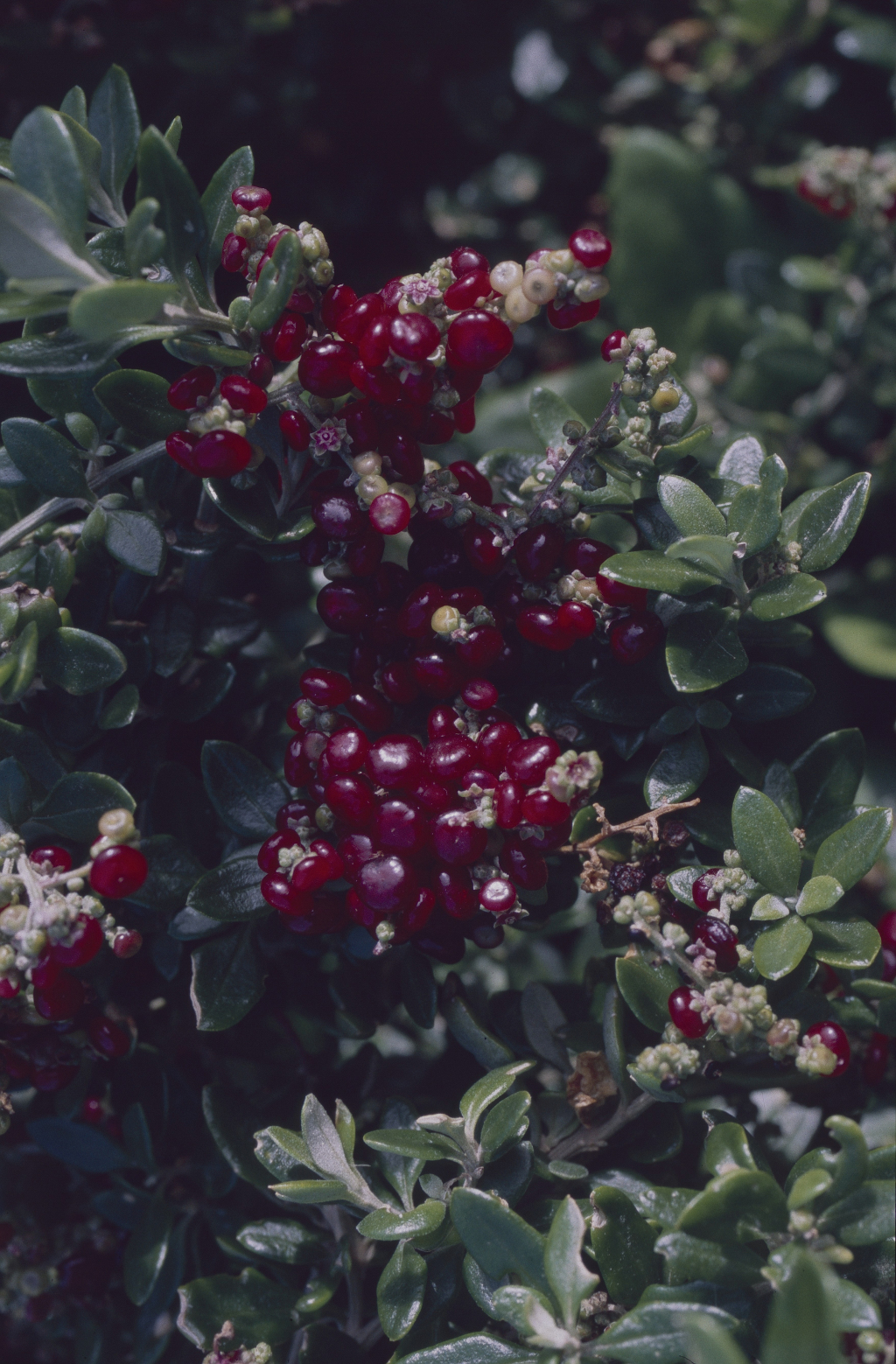Rhagodia candolleana subsp. candolleana
Willis, J.H. (1973). A handbook to plants in Victoria. Melbourne University Press, Carlton.
Sprawling shrub, to c. 4 m high. Leaves opposite or alternate, shortly petiolate, thin-textured to somewhat fleshy, almost oblong to broadly ovate or hastate, 10–30 mm long, 3–20 mm wide, usually markedly discolorous, upper surface glabrous, shining green, lower surface greyish and scaly, rarely both surfaces scaly or glabrescent. Inflorescence a sparse to rather dense pyramidal panicle, to c. 15 cm long, both sexes similar; tepals mealy on outer surface, c. 1 mm long, enlarging slightly in fruit. Berry c. 5 mm diam., crimson at maturity, bitter, clasped by reddish fruiting perianth; seed black, granular, c. 2 mm diam. Flowers Sep.–Dec.
LoM, Wim, GleP, Brid, VVP, GipP, OtP, WaP, Gold, CVU, GGr, EGL, EGU, WPro, HSF, HNF, OtR, Strz. WA, SA, NSW, Tas. Occurs along the extent of the Victorian coastline and on the margins of some salt or brackish lakes on the Volcanic Plain (e.g. Lake Ondit near Colac), with a few, pre-1900 records much further inland (Mt Arapiles, Stawell, Wyperfeld National Park, Beechworth). The inland specimens have narrower leaves than typical coastal plants, approaching those of Rhagodia crassifolia.
Rhagodia candolleana subsp. argentea occurs in north-western South Australia and is distinguished in having constantly hastate leaves with a silvery sheen on the lower surface.
Walsh, N.G. (1996). Chenopodiaceae. In: Walsh, N.G.; Entwisle, T.J., Flora of Victoria Vol. 3, Dicotyledons Winteraceae to Myrtaceae, pp. 129–199. Inkata Press, Melbourne.
 Spinning
Spinning
